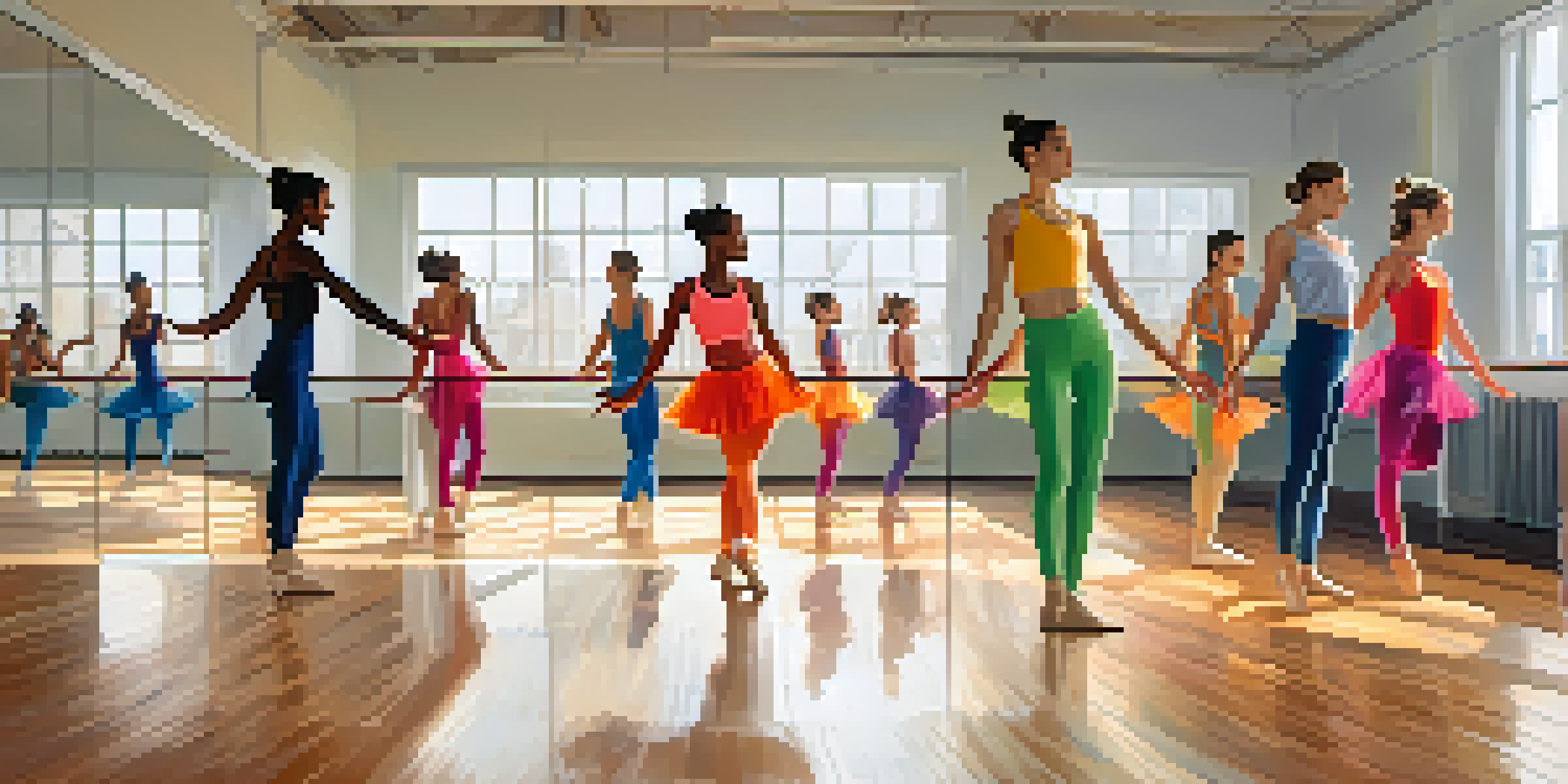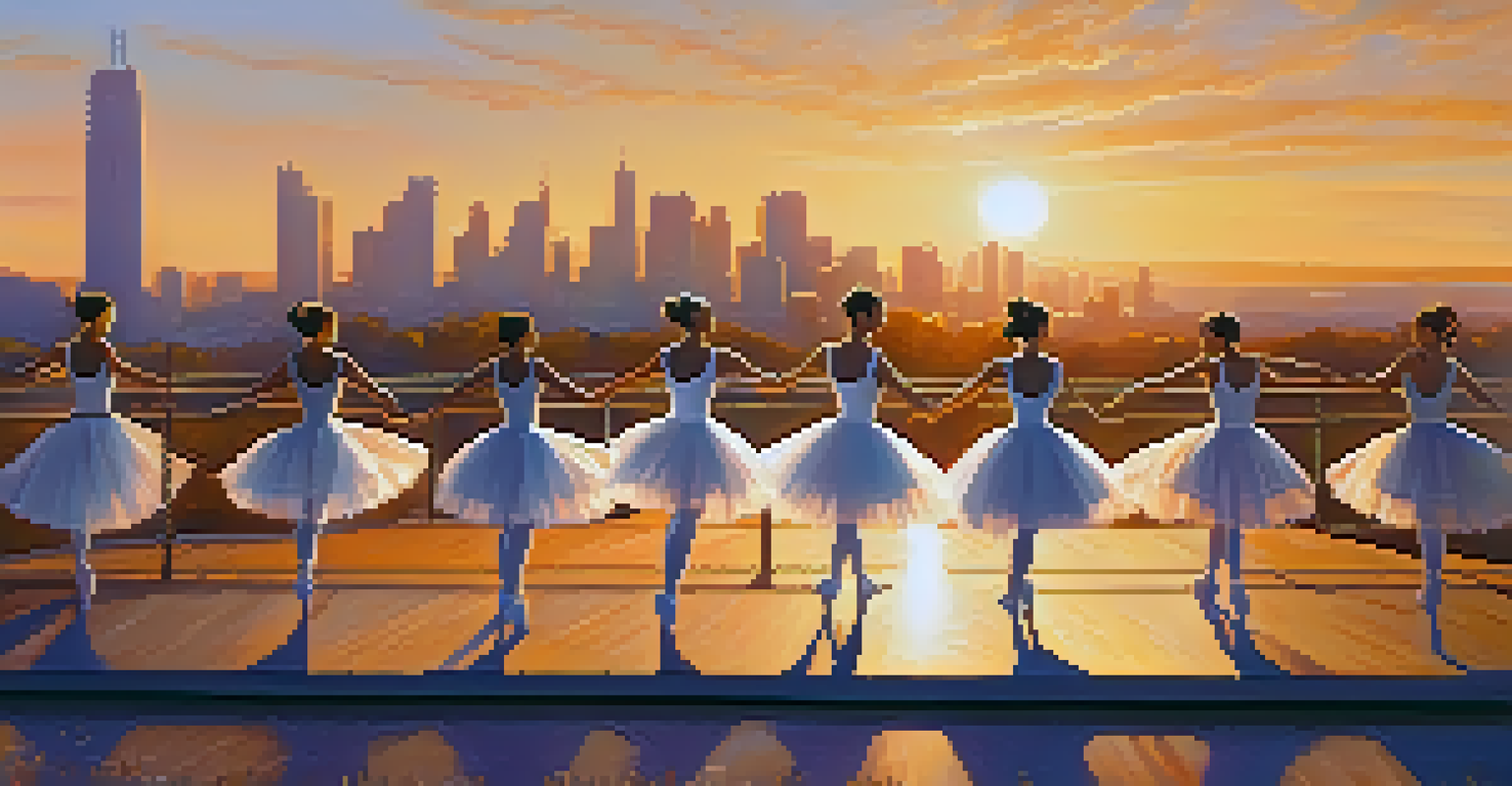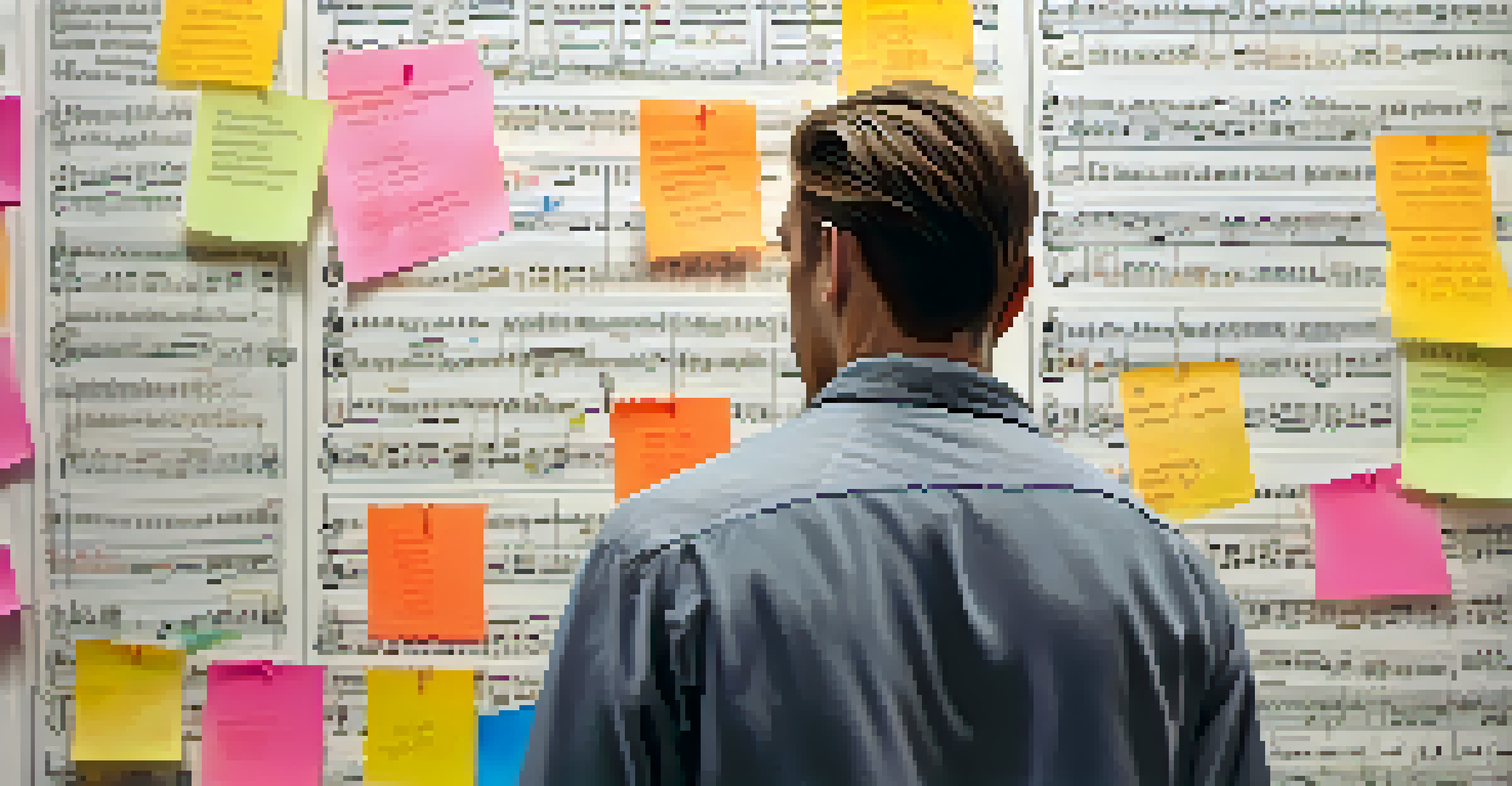The Art of Choreography: Crafting Dance for the Screen

Understanding Choreography: More than Just Dance Moves
Choreography is often perceived as a series of dance moves strung together, but it's much more nuanced. It involves the art of storytelling through movement, where every step communicates an emotion or a narrative. Just like a director guides actors, a choreographer directs dancers, ensuring that their movements align with the overall vision of the piece.
Dance is the hidden language of the soul.
In the context of screen dance, this means crafting sequences that resonate with the audience, drawing them into the story. Think of choreography as a language; each movement conveys a message, and the way it's structured can enhance the emotional impact of a scene. For instance, a slow, fluid dance can evoke sadness, while sharp, quick movements might convey excitement or tension.
Ultimately, understanding choreography requires recognizing its role in expressing complex ideas and emotions, making it an essential component of visual storytelling.
The Role of the Choreographer in Film Production
A choreographer is not just a creator of dance; they are an integral part of the film production team. They collaborate closely with directors, cinematographers, and editors to ensure that the dance movements align with the film's vision. This teamwork is crucial in creating a seamless blend of dance and narrative.

During production, the choreographer must adapt their routines to fit the unique demands of filming. This includes considering camera angles, lighting, and the physical space available for each performance. A well-choreographed sequence can elevate a scene, making it more visually appealing and emotionally resonant.
Choreography as Storytelling
Choreography goes beyond dance moves, serving as a nuanced form of storytelling that conveys emotions and narratives through movement.
The ability to communicate effectively with other departments is key. A successful choreographer understands how their work impacts the entire production, contributing to a cohesive final product that captivates the audience.
Incorporating Music: The Heartbeat of Dance
Music is the lifeblood of choreography, setting the tone and rhythm for each movement. A choreographer must select music that not only complements the dance but also enhances the emotional narrative of the scene. The right track can transform a simple routine into a powerful expression of feeling.
Choreography is the art of creating movement that tells a story.
When choreographing for the screen, the relationship between movement and music becomes even more critical. The timing of each step must align perfectly with the beat and mood of the music, creating a harmonious experience for the viewer. This synergy can make the dance sequences unforgettable.
Moreover, music can influence how dancers interpret their movements. The emotional cues in a song can guide performers to express feelings authentically, allowing them to connect with the audience on a deeper level.
Visual Storytelling: Creating Atmosphere Through Dance
Dance in film is a visual storytelling medium that conveys themes and emotions without words. Choreographers must think about how movement interacts with the surrounding environment, using space to enhance the narrative. Each gesture and formation can tell a story, adding layers of meaning to the film.
For example, a dance performed in a crowded urban setting can reflect feelings of isolation or connection, depending on how the dancers interact. Choreography can also highlight character development, showing growth or conflict through physical expression. This creates a richer viewing experience for the audience.
Collaboration in Film Production
Choreographers play a vital role in film production, collaborating with directors and other departments to ensure that dance aligns with the overall vision.
By using dance as a storytelling device, choreographers can evoke strong emotions, making the visuals more compelling and memorable. The art of choreography lies in its ability to convey complex ideas through movement, creating a powerful connection with viewers.
Adapting Dance Styles for Different Screen Genres
Different film genres call for different approaches to choreography. Whether it's the high-energy numbers of a musical, the fluid movements in a romance, or the sharp, aggressive dance styles in an action film, each style serves a unique purpose. Choreographers must adapt their techniques to fit the genre's tone and audience expectations.
For instance, a romantic film might feature gentle, flowing movements that evoke love and intimacy, while a thriller may employ fast-paced, sharp choreography to create tension and excitement. Understanding the genre's conventions helps choreographers craft sequences that resonate with viewers and enrich the storytelling.
This adaptability is what makes choreography such a vital component of film. By tailoring their approach to match the genre, choreographers ensure that dance enhances the film's narrative and emotional impact.
The Impact of Technology on Dance Choreography
Technology has revolutionized the way choreography is created and presented on screen. From digital editing software that allows for precise cuts and transitions to motion capture technology that can bring animated choreography to life, the possibilities are endless. This evolution has opened new avenues for creativity within the choreographic process.
Filmmakers can now experiment with different visual effects to enhance dance sequences, creating a unique viewing experience. For instance, slow-motion effects can amplify the beauty of a dancer's movements, while fast-cut editing can heighten excitement. These tools enable choreographers to push the boundaries of traditional dance.
Technology Shapes Dance Creation
Advancements in technology are transforming choreography, allowing for innovative visuals and creative expression in dance on screen.
As technology continues to evolve, so does the potential for innovative choreography. Embracing these advancements allows choreographers to create captivating visuals that resonate with modern audiences, making dance an integral part of contemporary storytelling.
The Future of Choreography in Film and Dance
As we look to the future, the landscape of choreography in film is set to change dramatically. With the rise of streaming platforms and digital content, there are more opportunities for choreographers to showcase their work. This shift means that dance can reach wider audiences, impacting how it is perceived and appreciated.
Moreover, collaborations between choreographers and filmmakers are likely to deepen, leading to more innovative and experimental works. As diverse voices in dance gain recognition, we can expect to see a broader range of styles and narratives represented on screen. This inclusivity enriches the art form and invites fresh perspectives.

Ultimately, the future of choreography in film is bright and full of potential. By embracing change and innovation, choreographers will continue to inspire audiences and redefine the art of dance on screen.